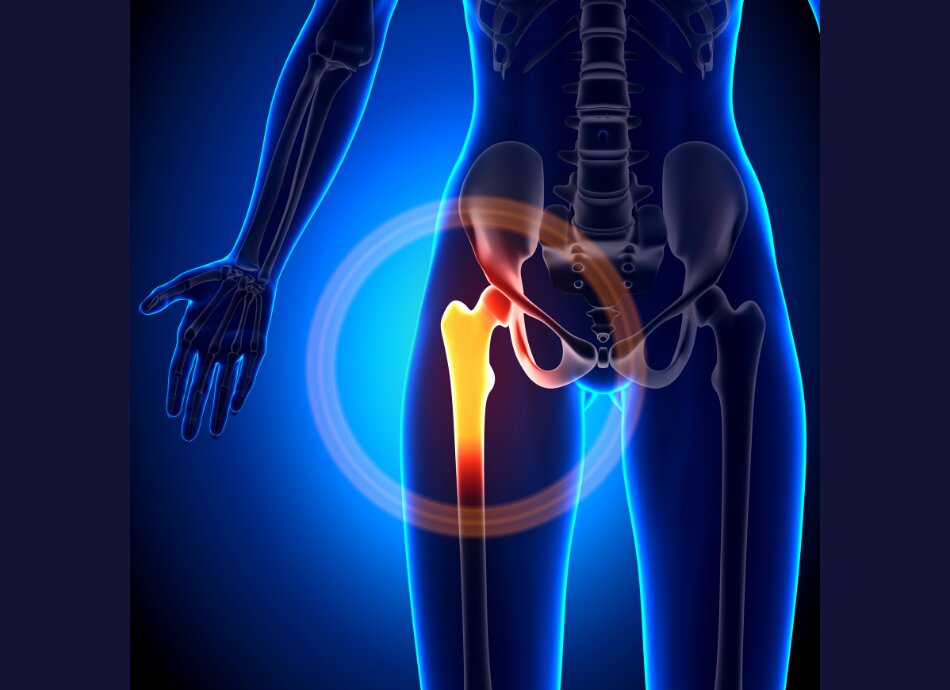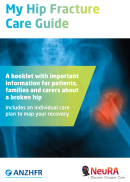Wishing everyone a safe and happy Christmas and New Year – Meri Kirihimete from the Healthify team.
Hip fracture
Broken hip
Key points about hip fracture
- Broken hips or hip fractures are breaks in the top of the thigh bone (femur) close to the hip joint.
- They're sometimes also known as neck of femur or NOF fractures.
- They're usually caused by a fall. In older people, a fall from standing is often enough to break a hip.
- Younger people can also break their hip. In these cases, it's more likely to be caused by trauma such as falling off a bike or falling from a significant height.
- The denser bones of younger people mean that greater force is needed to break a bone as large as the hip bone.

A broken hip or hip fracture is a break at the top of your thigh bone (femur) close to the hip joint. It's sometimes known as a neck of femur or NOF fracture and is usually caused by a fall.
In older people, a fall from standing is often enough to break a hip. Younger people can also break their hip. In these cases, it's more likely to be caused by trauma such as falling off a bike or falling from a significant height.
Symptoms of a broken hip after a fall may include:
- pain
- not being able to lift, move or turn your leg
- not being able to stand or put weight on your leg
- bruising and swelling around your hip
- your injured leg appearing shorter than your other leg
- your injured leg turning outwards.
A broken hip won't necessarily cause bruising or prevent you from standing or walking.
If you're worried that you may have broken your hip, you need to go to hospital for assessment. Call 111 for an ambulance.
A doctor will be able to tell if they think you've broken your hip by examining your hips and legs. To confirm whether your hip is broken, you'll need to have a scan such as an X-ray.
If you've had a fall, the doctor will try and find out why so they can treat any underlying cause. As well as an accident, there may be a medical reason for falling, such as low blood pressure, a heart rhythm abnormality or fainting.
Surgery
Surgery is usually the best treatment for a broken hip. In about half of all cases, a partial or complete hip replacement is needed. The other cases need surgery to fix the break with plates and screws or rods.
The type of surgery you have will depends on several factors, including:
- the type of break (where on the femur it is)
- your age
- your level of mobility before the break
- the condition of your bone and joint, eg, whether you have arthritis in the joint.
Conservative treatment
Conservative treatment may be necessary if surgery isn't possible, eg, if you are too frail to cope with surgery or didn't go to hospital straight after you broke your hip and it's already started to heal.
But conservative treatment involves a long period of bed rest and isn't often recommended because it can:
- make you more unwell in the long-term
- involve a longer stay in hospital
- slow down your recovery.
Once you're able to walk independently, get on and off the bed and use the toilet, recovering at home is usually the best option. Your hospital team can discuss the best options with you and your whānau.
- Physiotherapy: This is recommended after discharge to return to your previous level of function through physical activity and advice. The hospital team should discuss the best options for you.
- Physical activity: Follow the advice from your physiotherapist(external link) on how much physical activity you should do when you get home. In most cases, it's a good idea to gradually increase how often you walk and the amount of physical activity you do. Depending on what type of surgery you had, you may need to reduce or not do certain movements.
- Equipment: The hospital may provide you with loan equipment to support your recovery at home, such as a walking frame. ACC(external link) can also help with additional or long-term equipment.
- Home help: You may need support and help at home. This could be provided by ACC(external link) or community services.
- Eat well: This is important to help healing and recovery. Read more about healthy eating.
- Driving: Don’t drive until your general practice team or hospital healthcare team tell you it's ok to do so. Typically, this will be 6 weeks after surgery.
Some people have persistent pain in their hip area after a break. If this is severe, you should talk to your healthcare provider for advice.
Apps reviewed by Healthify
You may find it useful to look at some Physiotherapy and exercise apps.
You can reduce your risk of breaking your hip by taking steps to prevent and, if needed, treat thinning of your bones (osteoporosis).
You can also reduce your risk of falling by:
- keeping active to strengthen your bones and improve your balance
- assessing your home for hazards (eg, loose carpeting) and making it safer
- using walking aids, such as a walking stick or walker
- having regular eyesight checks.
Find out more about falls and how to preventing them. If you're concerned about your risk of falls, you should discuss this with your healthcare provider.
Recovering from a hip fracture(external link) Health Quality & Safety Commission, NZ
Apps
Physiotherapy and exercise apps
Brochures
My hip fracture guide(external link) ANZHFR, 2025 Also available in Hindi(external link), Urdu(external link), Nepali(external link), Korean(external link), Tagalog(external link), Spanish(external link), Arabic(external link), Greek(external link), Italian(external link), Punjabi(external link), Vietnamese(external link), Simplified Chinese(external link), Traditional Chinese(external link)
Recovering from a hip fracture – Pikinga ora i tētahi whainga hope(external link) ANZHFR, 2022 te reo Māori(external link)
Reference
- Broken hip(external link) NHS, UK, 2023
Guideline
Hip fracture clinical care standard(external link) Australian Commission on Safety and Quality in Health Care, 2023
Video: ANZHFR Annual Report Summary 2023
Video animation of the Australian and New Zealand Hip Fracture Registry (ANZHFR) annual report summary 2023. This video may take a few moments to load.
(ANZHFR Training and Education, 2023)
Annual report 2023(external link) ANZHFR
Apps
Brochures

My hip fracture guide
ANZHFR, 2025
Available in Hindi, Urdu, Nepali, Korean, Tagalog, Spanish, Arabic, Greek, Italian, Punjabi, Vietnamese, Simplified Chinese, Traditional Chinese
Credits: Content shared between HealthInfo Canterbury, KidsHealth and Healthify He Puna Waiora as part of a National Health Content Hub Collaborative.
Last reviewed:
Page last updated:






